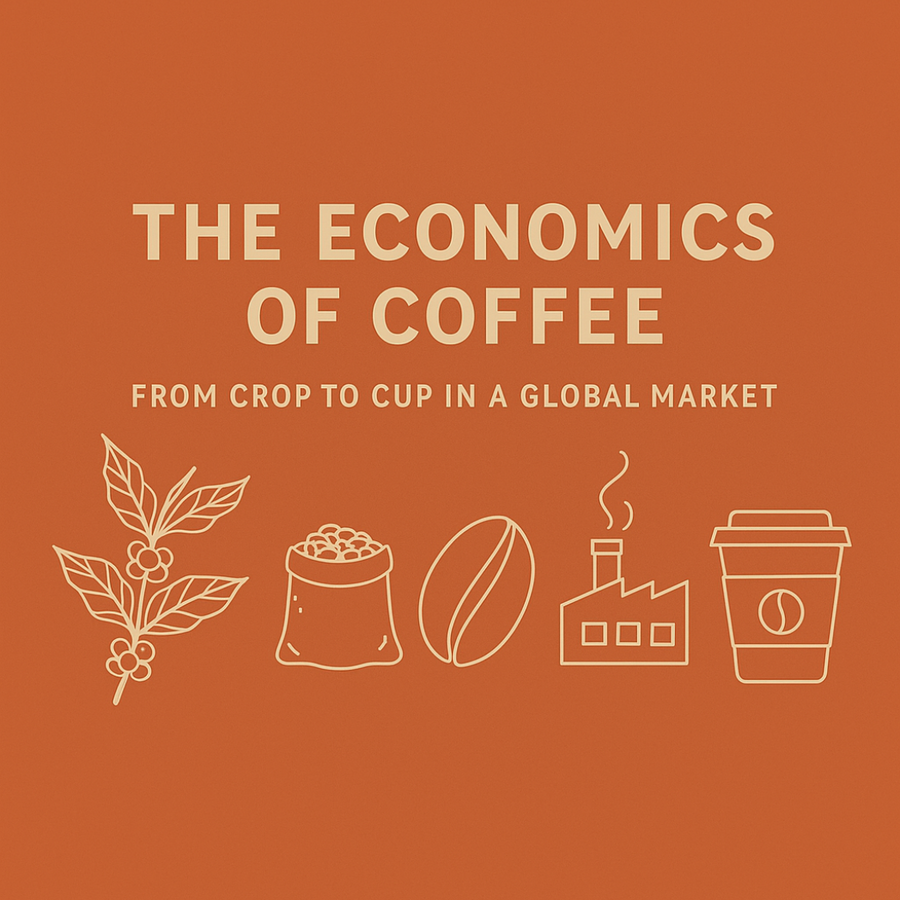
Economics of Growing and Selling Green
Coffee isn’t just a drink—it’s a daily ritual, a cultural touchpoint, and for millions of people around the world, a livelihood. As one of the most traded commodities on the planet, coffee’s journey from tree to takeaway cup is anything but simple. Behind every espresso shot or filter brew lies a vast, intricate network of farmers, traders, and roasters, all navigating the ever-shifting economics of a competitive and volatile global market.
Coffee is grown in over 70 countries, primarily within the tropical “Bean Belt” that stretches across South America, Africa, and Asia. Among its many species, Arabica and Robusta dominate production—with Arabica favoured for its delicate flavour and higher market value, comprising around 60% of global output.
Yet coffee cultivation is far from a passive process. From planting to first harvest, coffee trees require a minimum of three years to bear fruit. During this time, farmers must diligently manage soil health, irrigation, pest control, and disease prevention. These challenges are compounded by climate instability and increasing production costs.
Once harvested, the coffee cherries must be processed—a step that directly influences the bean’s flavour profile and market price. Whether using washed, natural, or honey methods, the processing decision is critical, often determining whether the coffee will fetch a premium or fall to commodity-grade pricing.
Once processed, green coffee enters a global market that is highly competitive and heavily influenced by international trade dynamics. Most coffee is traded as a commodity, where prices are determined by the C price (the global benchmark set on the Intercontinental Exchange).
Historically, smallholder farmers have had limited access to market data and pricing power. However, the rise of smartphone access has shifted the landscape. Today, many producers are better informed and increasingly demand fairer prices based on real-time C market data. This growing transparency is reshaping the traditional power imbalance, giving farmers a stronger voice in negotiations.
That said, coffee prices remain volatile. Factors like weather patterns, geopolitical instability, inflation, and even speculative investment can cause significant fluctuations. While larger roasteries may be able to hedge or contract long-term purchases, smaller businesses—like ours—often absorb the impact more directly.
Despite the challenges, global demand for high-quality coffee continues to grow. Consumers are becoming more conscious of where their coffee comes from and are seeking out brands that prioritise ethical sourcing and environmental responsibility.
For roasters and retailers, supporting a sustainable supply chain isn’t just good practice—it’s essential. That means working with reputable importers, investing in quality, and paying a fair price for green coffee that reflects the care, labour, and risk involved in its production.
The economics of coffee may be complex, but one thing is clear: the path to a better cup starts with shared value, transparency, and long-term thinking.
Coffee may be a simple pleasure for most of us—but for those who grow, process, and sell it, it’s a delicate balancing act of effort, economics, and endurance. As roasters and consumers, the more we understand the journey from crop to cup, the more we can appreciate what goes into every brew—and do our part to support a fair and sustainable coffee future.
